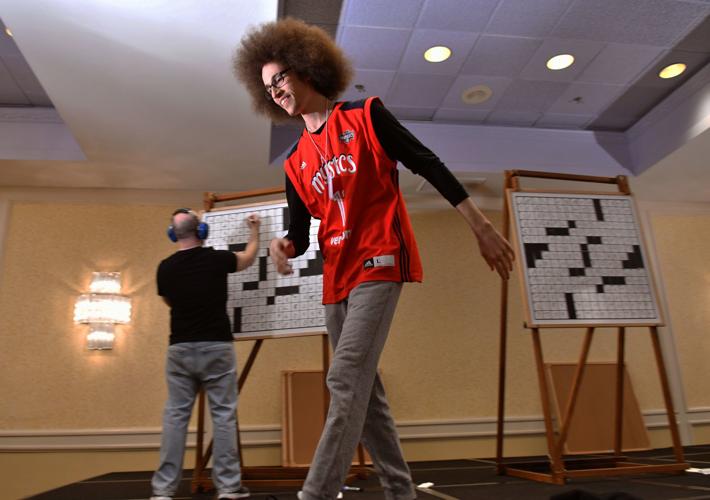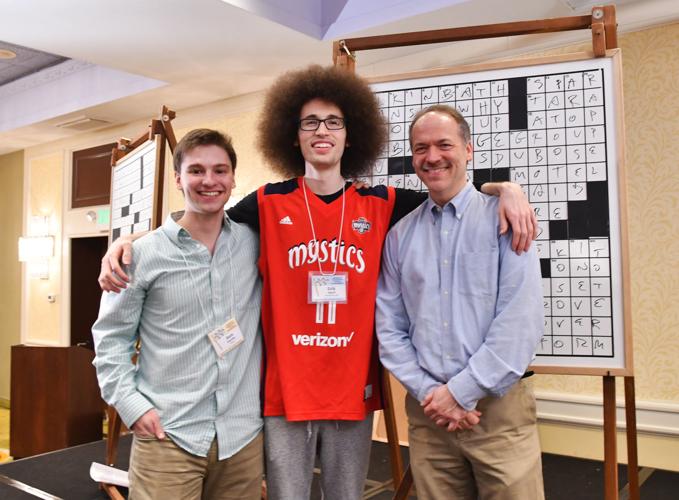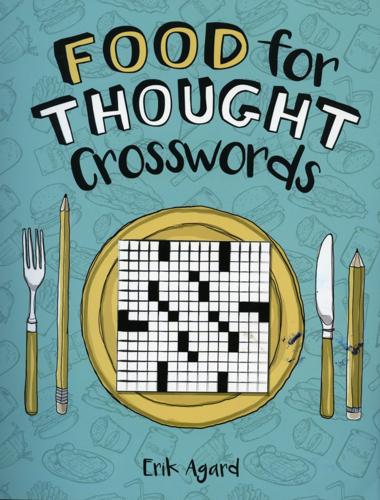Erik Agard knows he has big puzzles to fill:
He is the Star’s new crossword puzzle maker, a role the late Merl Reagle filled since the launch of this section nearly 20 years ago.
“If Merl’s not the greatest, he’s in the top five,” says Agard. “Who doesn’t want crosswords that are fun and irreverent and ingenious?”
Agard has a book of puzzles out, “Food for Thought Crosswords,” and his creations have appeared in such publications as the Los Angeles Times and the New York Times.
Like Reagle, Agard, 24, fell in love with puzzles in high school. His statistics teacher, David Stein, was his introduction to the world of crosswords.
“He would go to big crossword tournaments and would regale us with stories,” recalls Agard, speaking from his Gaithersburg, Maryland, home.
“We talked about (puzzles) a lot,” says Stein, who still teaches at Montgomery Blair High School in Silver Spring, Maryland. “The school runs a big puzzle tournament every year, and he was a star in that.”
Those tournaments pit puzzle solvers against one another, and it’s a race to see who can finish first and correctly. That is also the format for the annual American Crossword Puzzle Tournament run by the New York Times crossword puzzle editor Will Shortz. Agard snagged first place in the 2018 tournament in March, solving a complex puzzle in 4:58, 3:50 ahead of the seven-time champion. And not one mistake.
Stein was always impressed with Agard’s speed; he was even more impressed when he started creating puzzles.
“I didn’t know how great he would be,” he says. “His puzzles have a certain cleverness and hipness that you don’t find in others. (Star readers) are lucky; his puzzles are really good.”
Stein is just as impressed with Agard’s continued commitment to his high school — he helps the students create puzzles for the school paper and contributes puzzles to the annual tournament. “The kids always look forward to the Agard puzzle.”
Stein is also taken by his former student’s commitment to broadening the pool of puzzle makers, who are primarily white and male.
“He helps women and people of color get into puzzling,” says Stein.
That’s important, says Agard.
“Women aren’t inherently any worse at crosswords, and yet only about 15 percent of crosswords published by the New York Times are made by women (almost every other puzzle venue has similar or worse numbers),” he says in a follow-up email.
“Whether that’s because most crossword editors are men, or because some element of the crossword culture and community is unwelcoming to women (certainly the puzzles themselves throughout history have been plagued by misogynistic clues and answers), or because men are given more of a social green light to sink their time into relatively frivolous activities like making puzzles. ... At the end of the day it’s an issue of basic fairness and equity, and one that men in the puzzle world should feel a pressing responsibility to resolve. Same goes for white folks and the dearth of people of color in our community.”
Agard graduated from the University of Maryland, majoring in black studies. But his career is puzzle making.
“It’s what I’ve fallen into in life and it’s what I know. And it gives me happiness.”
He has a clear idea of what makes a good puzzle.
“I think the best crossword is one that challenges you or broadens your horizons while simultaneously reminding you that, hey, you’re pretty smart already,” says Agard.
“The clues can be easy or hard, but the answers should always be things you might reasonably be expected to know, and not, like, names of obscure South American sloths. And it should be full of humor and wordplay, engaging enough to make you forget to check your phone for whole minutes at a time.”
The Old Pueblo will figure into his puzzles, as they did with Reagle, who grew up in Tucson.
“Tucson is an amazing city chock full of inspiration I can pull from,” he says.
Agard reminds us of a young Reagle: in love with words, relentlessly hunting for ones that he can somehow work into a puzzle. He often winds in humor, he doesn’t shy away from puns and he is as comfortable pulling from pop culture as he is from literature and history.
“My approach in creating a puzzle is to stay open to inspiration and to let the ideas and the words speak to me and tell me how they want to be brought to life,” he says.
“Typically it starts with a theme or an interesting word or phrase; I build the rest of the puzzle grid around that, and then try to locate whatever wit or wordplay I can through the clues. As much as possible, I try to draw on a wide range of cultures and eras so there’s something for everyone.”
He wants feedback. Are they too hard? Too easy? Too esoteric? Let him know.
“I’m anxious to hear from crossword solvers,” he says.







